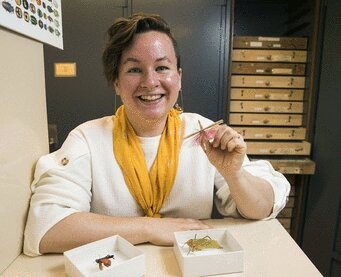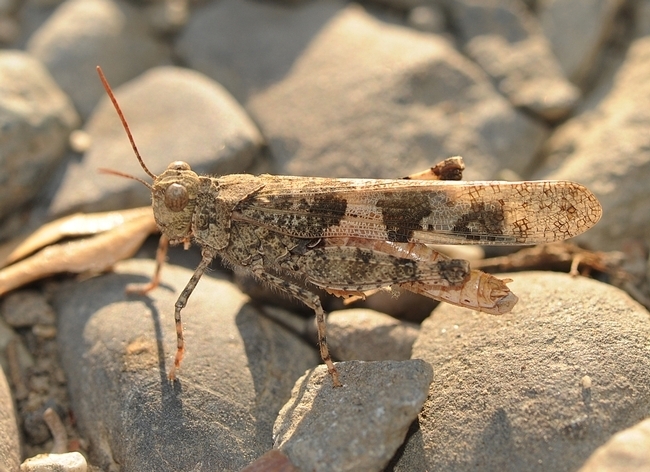
Postdoctoral research fellow and insect biomechanist Mary Salcedo of Virginia Tech has. She studies insect wings.
Salcedo will present a seminar on "Hydraulics in an Insect Wing: How Venation Pattern Affects Circulation" at the UC Davis Department of Entomology and Nematology seminar from 4:10 to 5 p.m., Wednesday, March 11 in 122 Briggs Hall.
"Insect wings are flexible, dynamic living structures that are composed of long tubular veins, and thin membrane," she says in her abstract. "Veins act as conduits, containing hemolymph (insect blood), oxygen supply (through trachea tubes), and nerves (sensory information in flight). Wings allow an insect to perform a myriad of behaviors such as predation, migration and pollination."
"In my research, I work to understand how wing health and function is maintained, and how that relates to insect development, behavior, and ecosystem. My research program incorporates foundational physiology (wing vein structure, venation pattern active systems) quantifying the biomechanics of flow produced by an insect (circulation, wing expansion, flapping flight), and determining how agricultural practices affect insect health. Here I will discuss how venation pattern affects circulation dynamics in the wings of the North American grasshopper (Schistocerca americana) and how it barely scratches the surface of understanding circulation in insects."
In a First Person piece in Biology Open, the Company of Biologists, Salcedo describes herself as "an insect biomechanist, but perhaps functional morphologist is more accurate. I've studied how insects fly, how their muscles move, how they breathe and circulate hemolymph. My PhD looked into their wing structure at several levels: external, internal and global. Externally, I looked at how wing shapes differ between species and how we might compare them. Within the insect wing vein, I studied how hemolymph is transported across the wing. Overall, I looked at how an insect's multiple hearts contribute to internal circulation."
Salcedo, who received the National Science Foundation Postdoctoral Research Fellowship to investigate fundamental insect physiology, holds three degrees: a bachelor of science in applied and computational math sciences (2012( from the University of Washington; a bachelor of science in molecular, cellular and developmental biology (2012) from the University of Washington, and a doctorate in biomechanics, biology and applied math (2018) from Harvard.
Coordinating the seminars is community ecologist Rachel Vannette, assistant professor, UC Davis Department of Entomology and Nematology (rlvannette@ucdavis.edu). To access the program live, go to https://zoom.us/j/559909612 and enter meeting ID: 559 909 612.
One tap mobile:
+14086380968,,559909612# US (San Jose)
+16699006833,,559909612# US (San Jose)
Dial by your location:
+1 408 638 0968 US (San Jose)
+1 669 900 6833 US (San Jose)
+1 646 876 9923 US (New York)
Meeting ID: 559 909 612
Attached Images:
